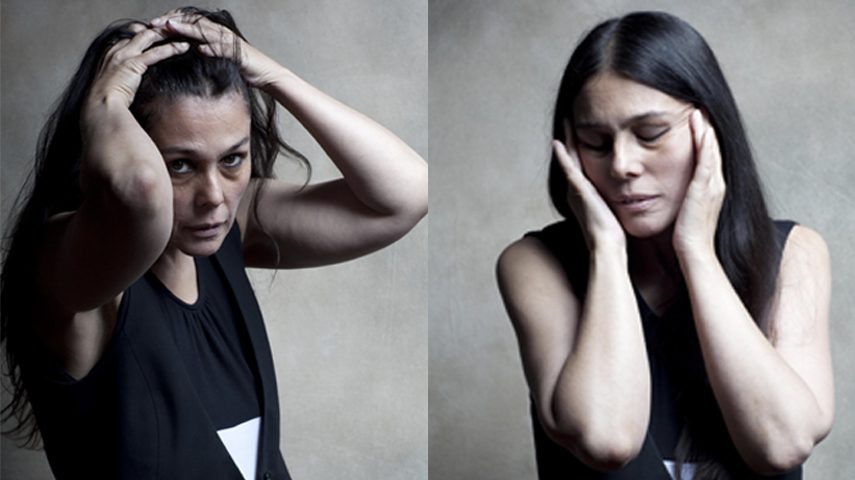About
“Brigitte Le Guern enlightens our world with her magic lantern. She enjoys taking hold of the face of things, grasping their material. Starting to work on photos, she interprets the reality, zooming on certain details and thus blowing the boundaries between real and surreal – as one can see in her series of Visage. The reality does not matter ; the commentary of the world is an iconography of the human, a collection of moments. By painting on photos and stressing those details, the artist delivers us her particular idea of the human. She brings our attention to specific organs (nose, mouth) and thus empties the subject of its expressive contents, as if the quivering of life was suddenly gone. Faces reduced to a mouth, a nose, a scream. An ambiguous mouth that could be an invitation to pleasure or a rejection of intimacy, that could reveal an animal side or twitch in a cry.
The artist’s lens keeps on dissecting, maybe hoping to find the sacred nature of things. It seems that through this multiplicity of faces, Brigitte tries to reach the face without a face, to borrow the beautiful phrase of Brau Van Velde. An ambiguity appears through the serie Corps too. Their positions might invite to pleasure but the focus on certain details (stains, skin texture, hair) reveals the flesh under the shell. The flesh doesn’t appeal to seduction, but embodies the vicissitudes of life. The animal that we are, before anything else. A flesh that is depicted in its purest simplicity, as a combination of blood, skin, muscles, sometimes shown under a raw light.
It’s the aging of the skin, its mutations that we witness ; except for a few canvases, the bodies carry the mark of time. One could think of Cocteau who used to say : Everyday, looking at the mirror, I see death at work. In Brigitte Le Guern’s art, one finds a tenderness for the flesh, as well as a fascination for what lays hidden from view. Both life and time become perceptible, visible, and are now offered to our contemplation. The silence and the solitude of bodies prevail in these paintings. As Diderot used to say : The great painters don’t paint things as they are but as they feel them. And, looking at these series of bodies and faces, we certainly feel that the artist invites us to participate in a rite of passage. This rite of passage starts with the scar left by the umbilical cord in the series Nombrils 1 and Nombrils 2, the original wound, the link to oneself and to the mother ; a beloved and exhibited scar which means that we are thrown in this world to die in it (Heidegger). A solitude that is carried by this young woman, who only lets us see the nape of her neck in the serie Nuque.
Finally, the serie L’homme au compteur is trapped in terror. Here, the artist uses photography as a narrative arc, as if using a camera. Fly-on-the-wall moments that catch the emotion. An emotion that immobilizes, petrifies. Solitude and loneliness in an urban, mechanized environment. One cannot help thinking about the Gorgon, whose look paralyzes, turning into rock those who meet it. The Gorgon brings the deadly look to the forefront, because a face first implies a visual reciprocity. But those who cross paths with the Gorgon remain petrified. This face is therefore a forbidden face, a non-face. But the painting, thanks to the distance that it creates between its subject and its double, thwarts death. And the magic of the painter gives back to the face its eloquence, making us contemplate our piddling yet spectacular lives and leaving us with a deep emotion.”
Elisabeth Blanchard
